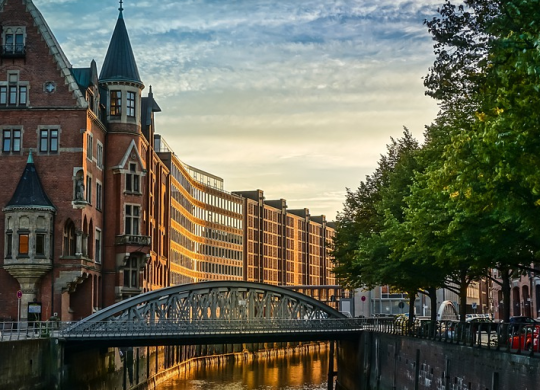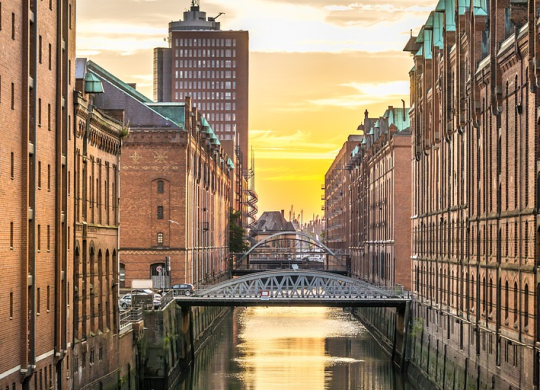Traveling to Germany: entry rules and visa processing, what to see for a tourist

Germany is one of Europe's oldest and most beautiful countries. The state is known for its meticulous attitude to beautification, craftsmanship and tourist destinations linked to the state's rich past. Over the centuries, the land has changed, developed and experienced ups and downs. Today, millions of tourists from all over the world come to this country to see the monuments of an ancient era. Tours to Germany come in all shapes and sizes. Some are for the urban experience, while others are attracted to the aesthetics of a bygone era. Some come to see nature in a German way, which is ennobled and beautiful.
Read more about healthcare in Germany for foreigners, insurance and medical tourism here.
Jobs in Germany: the most popular vacancies for expats - find here.
Rules for entering Germany
- As of June 11, 2022, it will be possible to enter Germany for any purpose from anywhere in the world except China, the German Foreign Office said.
- This means that tourist travel to Germany is now permitted without restrictions.
- It is not necessary to be vaccinated and show a certificate of vaccination, convalescence or to have a COVID-19 test to enter the country.
- The ban on tourist travel to Germany was only left in place for residents of China as a retaliatory measure. This is because China bans similar travel for EU residents.
What to see in Germany?
Munich is the capital of Bavaria and a notable city. At least there are three main attractions that other cities don't have: ancient cathedrals such as the Allianz Arena, the Asamkirche, the Frauen and Petra Church, and the most famous Oktoberfest beer festival. When travelling to Germany, why not check out Dresden, Germany's cultural centre?
If you're looking to de-stress, soothe your health and enjoy the castles and museums, head to the world-famous Baden-Baden resort. The Belle Epoque house, the 400m Hohenbaden (old castle) and the Trinkhalle Brewery arcade with frescos and 16 columns. Apart from the big cities, there are plenty of places of interest. Medieval castles and fortresses are well preserved. There are also quite a few nature reserves and theme parks. Prices vary depending on the time of year and the number of tourists.
What you need to get a visa
To obtain a visa for Belarusians to travel to Germany, you need to determine the purpose of your trip. If you wish to see the sights of the country, you need to open a tourist visa to Germany. If you are going to Germany for business purposes, you need to apply for a business visa. Each visa type implies a specific set of documents for travelling to Germany. To determine the correct type of visa for Belarusians, you can contact the managers of our company.
List of documents for a tourist visa to Germany
The most common visa is a tourist visa. To obtain a tourist visa, you will need to collect the following documents:
1. Application form
2. Two up-to-date 3.5 by 4.5-size photos
3. Health insurance policy
4. Passport no older than 10 years
5. Hotel reservation.
Please note that if you cancel your hotel reservation during your application period it may result in the refusal of your visa.
Read more about the types of work visas in Germany and how to get one here.
Transport in Germany
Germany is a very convenient country for people who travel a lot within the country. It has an excellent transport network, both over long distances and between regions. The fastest and most convenient way is by train.
EuroCity (EC) and InterCity (IC) are simple high-speed trains, the latter can only run in Germany, and the former abroad.
There are also many passes available in Germany that will make your life easier. For example, if you buy a Quer-durchs-Land-Ticket, you can ride regional trains in Germany without restrictions. You can also travel around Germany by purchasing a "Weekend Ticket" and use regional trains and some routes in neighbouring Poland.
Conditions of carriage of your baggage
Under the hand luggage regulations in force since 2006 at all airports of departure within the European Union, a passenger may take on board one piece of hand luggage weighing up to 8 kg and measuring no more than 56x45x25 cm (IATA standard).
In addition to normal restrictions on carry-on liquids and gels, there are restrictions on carry-on liquids and gels purchased before security screening.
- Liquids of all kinds (e.g. cosmetics, toiletries, gels, pastes, creams, lotions, mixtures of liquid and solid substances, perfumes, pressure cans, tins, bottles of water, etc.) and wax-like or gel-like substances may only be taken on board in containers of a maximum volume of 100ml or 100g. These liquids or substances must be tightly closed and sealed in a transparent plastic bag with a zip fastener - the maximum weight of the contents is 1 kg.
- Prescribed medicines and baby food can still be carried in your hand baggage. Passengers must document the need to carry medication and baby food with them during the flight.
- Non-compliant items must unfortunately be turned in.
- Liquids and gels, which will not be needed on board, should be placed in your checked-in baggage, if possible.
Hotlines
Emergencies:
110 - 24-hour police (24/7, emergency, German/English);
112 - 24-hour fire and ambulance service (24/7, emergency, German/English);
Medical on-call service:
116 117 - Medical assistance at weekends or nights (24/7, German/English).
Recommended articles
5 min
Travels
All materials and articles are owned by VisitWorld.Today and are protected by international intellectual property regulations. When using materials, approval from VisitWorld.Today is required.



